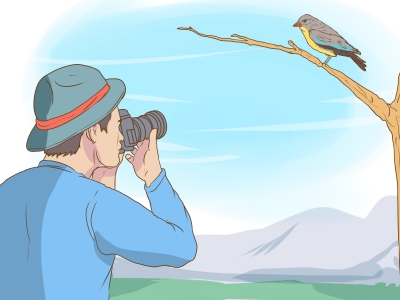
Birdwatching is an interesting, exciting as well as a relaxing hobby for children. But do you know the basics of birdwatching? Read on to find out what we need to do when on a birding trail in this first of a five-part series.
Oodles of patience, hours of silent observation and no sudden movements – these are the prerequisites of birdwatching.
So you’ve bought your first pair of binoculars (if that’s a mouthful, let’s stick to binns or binocs!). Congratulations! I hope you have worn your dullest, darkest clothes, because birds have good eyesight and can spot bright yellows, reds and blues from a mile away. That’s a green signal for them to scoot!
Locate the bird
First locate the bird with the naked eye when it flies and settles on a branch, and then focus your binocs on the spot. Birds usually sit high up in the canopy or flit amidst dense foliage, so it might be a while before you see one clearly.
Pointing your finger and letting out a screech of joy when you spot it to let others know, are strict no-nos. Birds think you are about to shoot at them if you lift your hand up suddenly. Their hearing is sharp too, which is why birdwatching is best done in very small groups.
You might think that following the sound of a calling bird would give away its hiding place, but be warned! Most birds are master ventriloquists so while you focus on a spot in front of you, the bird might be trilling away happily behind your back!
Peak hours for avian traffic
The time between sunrise and 10 a.m. are the peak hours for avian traffic. You will hear the maximum number of bird calls then and see them out in the open as they search busily for insects, berries and flower nectar.
The activity tapers off gradually by noon. In the stillness of the afternoon, birds sit quietly in the shade of the leaves and there is nary a movement to tell you that a little fella is perched on the twig near your nose!
By four o’clock or thereabouts, there is a stirring, a rustling and a hunting for a quick evening snack. And then there is a great flying to and fro as the birds return to their roosting spots for the night. That is a good time to watch them, too, but the fading light often plays spoilsport and all you can see sometimes are silhouettes.
However, despite tired arms, aching neck and sore eyes, it’s all been worth it, because you saw your very first Asian paradise flycatcher in flight, weaving in and out among the leaves like a ghost, his long white tail gleaming in the dim light…
Birding app
Novice birdwatchers need not worry. The Merlin Bird Id app is a truly amazing, easy-to-use aid in identifying a bird by its appearance, calls, songs and the area and month one sees it!
Developed by Cornell Lab of Ornithology, New York, the free-to-download app has different ‘bird packs’ which list all the likely birds that can be seen in a particular country or region of the world, including oceans! There are photos, too.
Useful tips
- Most sanctuaries and national parks conduct birdwatching trails. One of the best times to watch birds is when the trees have shed their leaves.
- Wear dull-coloured clothes that merge with the surroundings. Avoid any jerky or noisy movements that would disturb a bird.
- Carry a pair of binoculars with you. A spotting scope would be ideal as you get an upright image unlike the inverted image you get in a telescope
- Take an illustrated field guide (or get hold of Dr. Salim Ali’s “Book of Indian Birds”) to help you to identify unfamiliar birds.
- Ideally, familiarise yourself with the birds in the region before starting the trail. For this, read about their physical features, calls, habitat and the time of the day when you are most likely to see them.
Picture Credit : Google




